Properties of Stones
Important Point
The following properties of the stones should be looked into before selecting them for engineering works:
- Structure.
- Texture.
- Density.
- Appearance.
- Strength.
- Hardness.
- Percentage Wear.
- Porosity and Absorption.
- Weathering.
- Toughness.
- Resistance to Fire.
- Ease in Dressing.
- Seasoning.
Also, read: What Are Walls | Classified of Walls | Load-Bearing Vs Partition Walls
1. Properties of Stone: Structure
The structure of the stone may be stratified (layered) or unstratified. Structured stones should be easily dressed and suitable for super-structure.
Unstratified stones are hard and difficult to dress. They are preferred for the foundation works.
2. Properties of Stones: Texture
Fine grained stones with homogeneous distribution look attractive and hence they are used for carving. Such stones are usually strong and durable.
3. Properties of Stones: Density
Denser stones are stronger. Light-weight stones are weak. Hence stones with a specific gravity less than 2.4 are considered unsuitable for buildings.
4. Properties of Stones: Appearance
A stone with uniform and attractive colour is durable if grains are compact. Marble and granite get a very good appearance, when polished. Hence they are used for face works in buildings.
Also, read: What Is Flooring | Types of Flooring.
4. Properties of Stones: Strength
Strength is an important property to be looked into before selecting stone as a building block. Indian standard code recommends, a minimum crushing strength of 3.5 N/mm2 for any building block.
Table 1 shows the crushing strength of various stones. Due to the non-uniformity of the material, usually, a factor of safety of 10 is used to find the permissible stress in a stone.
Hence even laterite can be used safely for a single storey building because in such structures expected load can hardly give stress of 0.15 N/mm2.
However in stone masonry buildings care should be taken to check the stresses when the beams (Concentrated Loads) are placed on laterite wall.
| Name of Stone | Crushing Strength in N/mm2 |
| Trap | 300 to 350 |
| Basalt | 153 to 189 |
| Granite | 104 to 140 |
| Slate | 70 to 210 |
| Marble | 72 |
| Sand Stone | 65 |
| Lime Stone | 55 |
| Laterite | 1.8 to 3.2 |
Table 1. Crushing Strength of Common Building Stones
5. Properties of Stones: Hardness
It is an important property to be considered when a stone is used for flooring and pavement. The coefficient of hardness is to be found by conducting a test on a standard specimen in Dory’s testing machine.
For road works coefficient of hardness should be at least 17. For building works stones with a coefficient of hardness less than 14 should not be used.
6. Properties of Stones Percentage: Wear
It is measured by the attrition test. It is an important property to be considered in selecting aggregate for road works and railway ballast. A good stone should not show the wear of more than 2%.
7. Properties of Stones: Porosity and Absorption
All stones have pores and hence absorb water. The reaction of water with a material of stone cause disintegration.
The absorption test is specified as the percentage of water absorbed by the stone when it is immersed underwater for 24 hours.
For a good stone it should be as small as possible and in no case more than 5.
Also, read: What Is Stone | Type of Stones | Uses of Stones
8. Properties of Stones: Weathering
Rain and wind cause loss of the good appearance of stones. Hence stones with good weather resistance should be used for face works.
9. Properties of Stones: Toughness
The resistance to impact is called toughness. It is determined by the impact test. Stones with toughness index more than 19 are preferred for road works.
Toughness index 13 to 19 are considered medium tough and stones with toughness index less than 13 are poor stones.
10. Properties of Stones: Resistance to Fire
Sand-stones resist fire better. Argillaceous materials, though poor in strength, are good in resisting fire.
11. Properties of Stones: Ease in Dressing
The cost of dressing contributes to cost of stone masonry to a great extent. The dressing is easy in stones with lesser strength.
Hence an engineer should look into sufficient strength rather than high strength while selecting stones for building works.
12. Properties of Stones: Seasoning
The stones obtained from the quarry contain moisture in the pores. The strength of the stone improves if this moisture is removed before using the stone.
The process of removing moisture from pores is called seasoning. The best way of seasoning is to allow it to the action of nature for 6 to 12 months. This is very much required in the case of laterite stones.
Also, read: What Is Isometric Projection | Principle of Isometric Projections | Isometric Scale
Requirements of Good Building Stones
The following are the requirements of good building stones:
- Strength
- Durability
- Hardness
- Toughness
- Specific Gravity
- Porosity and Absorption
- Dressing
- Appearance
- Seasoning
- Cost
1. Strength : The stone should be able to resist the load coming on it. Ordinarily this is not of primary concern since all stones are having good strength. However in case of a large structure, it may be necessary to check the strength.
2. Durability: Stones selected should be capable of resisting adverse effects of natural forces like wind, rain, and heat.
3. Hardness: The stone used in floors and pavements should be able to resist abrasive forces caused by the movement of men and materials over them.
4. Toughness: Building stones should be tough enough to sustain stresses developed due to vibrations. The vibrations may be due to the machinery mounted over them or due to the loads moving over them. The stone aggregates used in the road construction should be tough.
5. Specific Gravity: Heavier variety of stones should be used for the construction of dams, retaining walls, docks, and harbors. The specific gravity of good building stone is between 2.4 and 2.8.
6. Porosity and Absorption: Building stone should not be porous. If it is porous rainwater enters the pour and reacts with stone and crumbles it. In higher altitudes, the freezing of water in pores takes place and it results in the disintegration of the stone.
7. Dressing: Giving the required shape to the stone is called dressing. It should be easy to dress so that the cost of dressing is reduced. However the care should be taken so that, this is not at the cost of the required strength and the durability.
8. Appearance: In case of the stones to be used for face works, where appearance is a primary requirement, its colour and ability to receive polish is an important factor.
9. Seasoning: Good stones should be free from the quarry sap. Laterite stones should not be used for 6 to 12 months after quarrying. They are allowed to get rid of quarry sap by the action of nature. This process of removing quarry sap is called seasoning.
10. Cost: Cost is an important consideration in selecting a building material. The proximity of the quarry to the building site brings down the cost of transportation and hence the cost of stones comes down.
Types of Stones Used in Construction
- Basalt: An igneous rock often used for road pavement or concrete aggregates.
- Granite: An igneous rock that is durable and is easily polished.
- Limestone: A sedimentary rock that is the most commonly used to make crushed stone in the United States.
Property of Stones
Stone is a heterogeneous substance characterized by wide ranges of mineral composition, texture, and structure. Consequently, the physical and chemical properties, i. e., the durability, are extremely variable.
Characteristics of Stone
- Density: Density simply refers to the weight of a stone and is measured relative to the density of water (1 gram per cubic cm).
- Porosity: Porosity is the amount of open space between mineral grains in a stone (and generally dictates permeability).
- Permeability: Permeability is the ability of liquids to move through a stone.
- Absorption: This is a key characteristic that needs to be front and center of any natural stone project.
Types of Natural Stones and Their Properties
There are various types of natural stones, each with its unique properties and characteristics. Here are some commonly known natural stones:
- Granite: Granite is an igneous rock known for its durability and strength.
- Marble: Marble is a metamorphic rock that is known for its elegance and beauty.
- Slate: Slate is a fine-grained metamorphic rock that is derived from shale or clay.
- Limestone: Limestone is a sedimentary rock composed mainly of calcium carbonate.
- Travertine: Travertine is a type of limestone that forms in mineral springs or hot springs.
Physical Properties of Gemstones and Their Meanings
Gemstones possess a variety of physical properties that contribute to their unique beauty and value. Here are some commonly considered physical properties of gemstones and their associated meanings:
- Transparency/Clarity: The transparency or clarity of a gemstone refers to its ability to transmit light.
- Cut: The cut of a gemstone refers to its shape and the way it has been faceted.
- Luster: Luster refers to the way light reflects off the surface of a gemstone.
- Hardness: Hardness is a measure of a gemstone’s resistance to scratches and abrasion.
Durability and Strength Requirements for Building Stones
The durability and strength requirements for building stones depend on several factors, including the intended use, environmental conditions, and architectural considerations. Here are some general guidelines:
- Compressive Strength
- Flexural Strength
- Abrasion Resistance
- Weathering Resistance
- Porosity and Permeability
- Dimensional Stability
- Chemical Compatibility
Dimensional Stability and Uniformity in Building Stone Selection
When it comes to building stone selection, dimensional stability and uniformity are crucial factors to consider. Let’s explore each of these concepts in more detail:
Dimensional Stability
- Shrinkage and Expansion
- Thermal Conductivity
- Moisture Absorption
- Testing and Specifications
Uniformity
- Color Consistency
- Texture and Finish
- Grain and Veining
- Quality Control
Chemical Properties of Sedimentary Rocks in Construction
Sedimentary rocks, which are formed through the accumulation and lithification of sedimentary particles, possess certain chemical properties that can be relevant to their use in construction. Here are some key chemical properties of sedimentary rocks and their implications in construction:
- Mineral Composition
- Cementing Materials
- Porosity and Permeability
- Weathering Resistance
- Reactivity
- Trace Elements and Contaminants
Physical Properties of Stone
Important properties include the rocks’ colour, colour intensity, colour blend, grain size, structure and texture. It is also important for the appearance and colour of the stone surface to be durable and for the rock to withstand weathering and discoloration.
Characteristics of Good Building Stone
Properties to look for in good building stones :
- Specific gravity
- Crystalline, close-grained, homogeneous and densely packed structure.
- Little or no porosity.
- Uniformity of a freshly broken or cut surface.
- Ease of quarrying and dressing.
- Good workability.
- Ability to be polished or painted.
What Are the Requirements of Good Building Stone?
The following are the quality requirements of good building stones:
- Strength.
- Durability.
- Hardness.
- Toughness.
- Specific Gravity.
- Porosity and Absorption.
- Dressing.
- Appearance.
Good Quality Stones Must
When it comes to determining the quality of stones, several factors play a crucial role. Here are some key aspects to consider for good quality stones:
- Clarity
- Color
- Cut
- Carat Weight
- Rarity
- Durability
- Certification
Stones in Civil Engineering
I. Stones Commonly Used for Construction
- Granite. Granite is one of the most used stones for building construction.
- Marble. Marble is a metamorphic rock formed when limestone goes through excessive pressure and heat.
- Basalt.
- Onyx.
- Slate.
- Sandstone.
- Alabaster.
- Travertine.
What Is Stone in Civil Engineering?
Stones form one of the most important building materials in civil engineering. Stones are derived from rocks, which form the earth’s crust and have no definite shape or chemical combination but are mixtures of two or more minerals.
What Percentage of Water Absorbed by a Good Building Stone?
A good bldg stone should be less porous. It should not absorb more than 5% of water. Any stone absorbing 10% of water should be rejected.
For a Good Building Stone How Much Is the Required Crushing Strength?
Crushing Strength : For a good building stone, the crushing strength should be greater than 100 N/mm3.
Like this post? Share it with your friends!
Suggested Read –
- What Is Quarry Stone
- What Is Dressed Stone
- 10 Best Cement Companies In India
- What Is Crane | Different Types of Cranes
- What Is Concrete | 31 Different Types of Concrete
- What Is Shoring In Construction | Type of Shoring
- What Is Well Foundation | Component of Well Foundation
- Difference Between One Way Slab and Two Way Slab | What is Slab
- What Is Standard Proctor Test & his Detail | Procedure Standard Proctor Test
- What Is Structural Settlement | Causes For Structural Settlement | What Is Soil Settlement & Foundation Structural Settlement
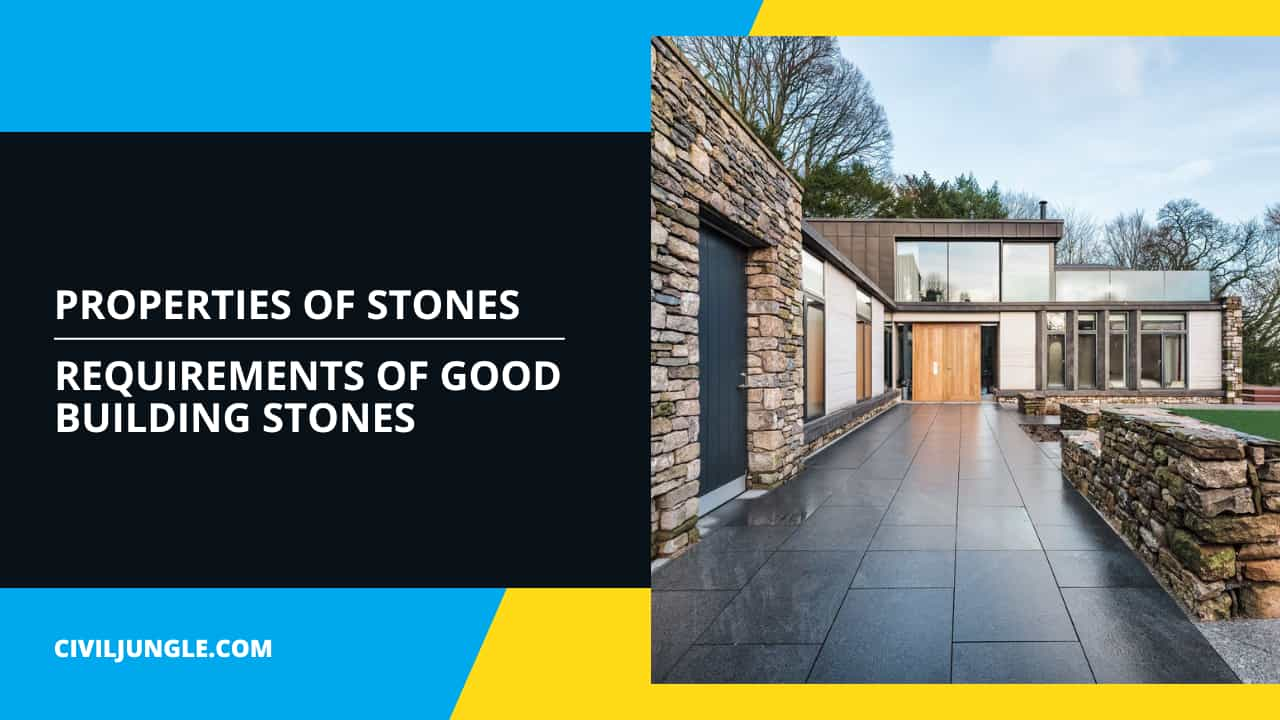
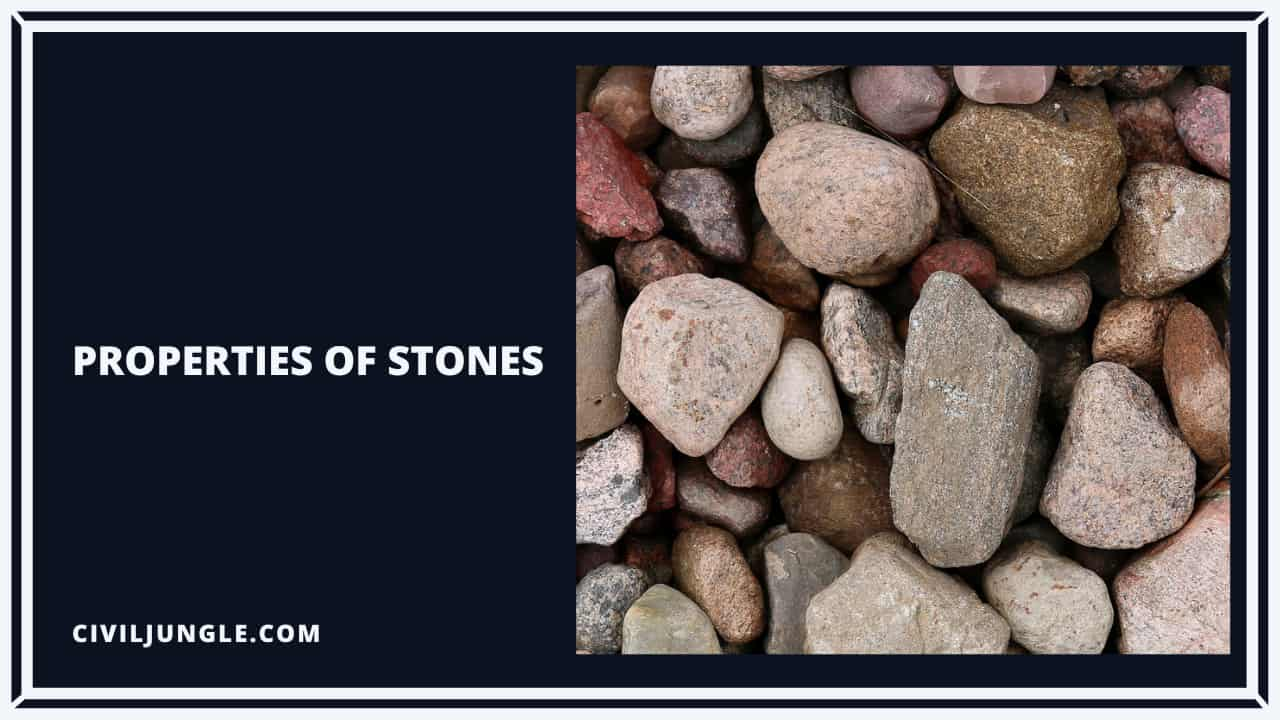

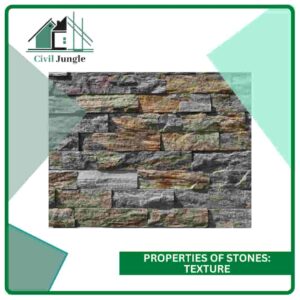
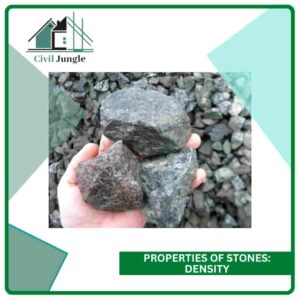
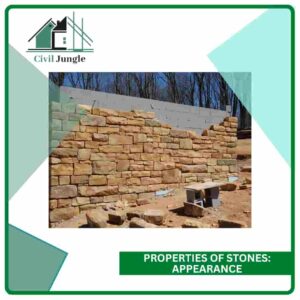
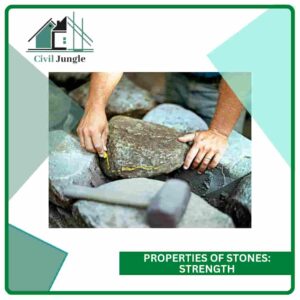
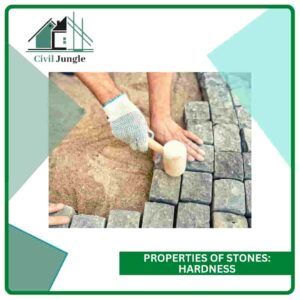
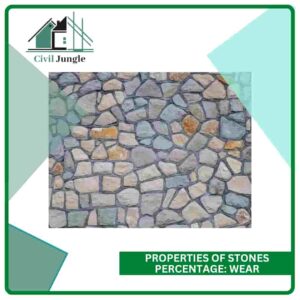
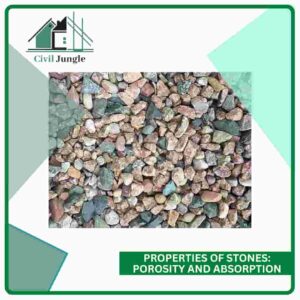
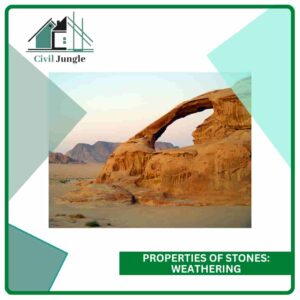
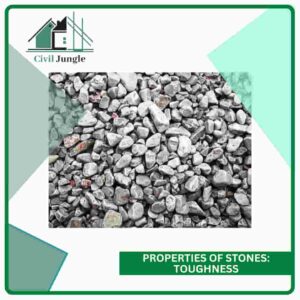
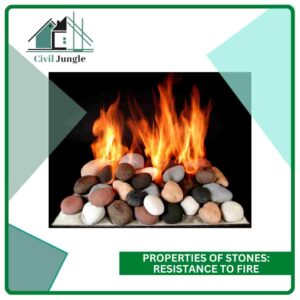

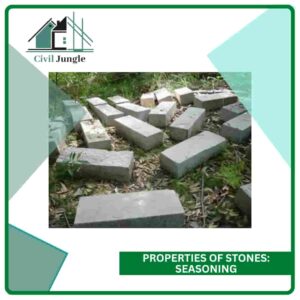
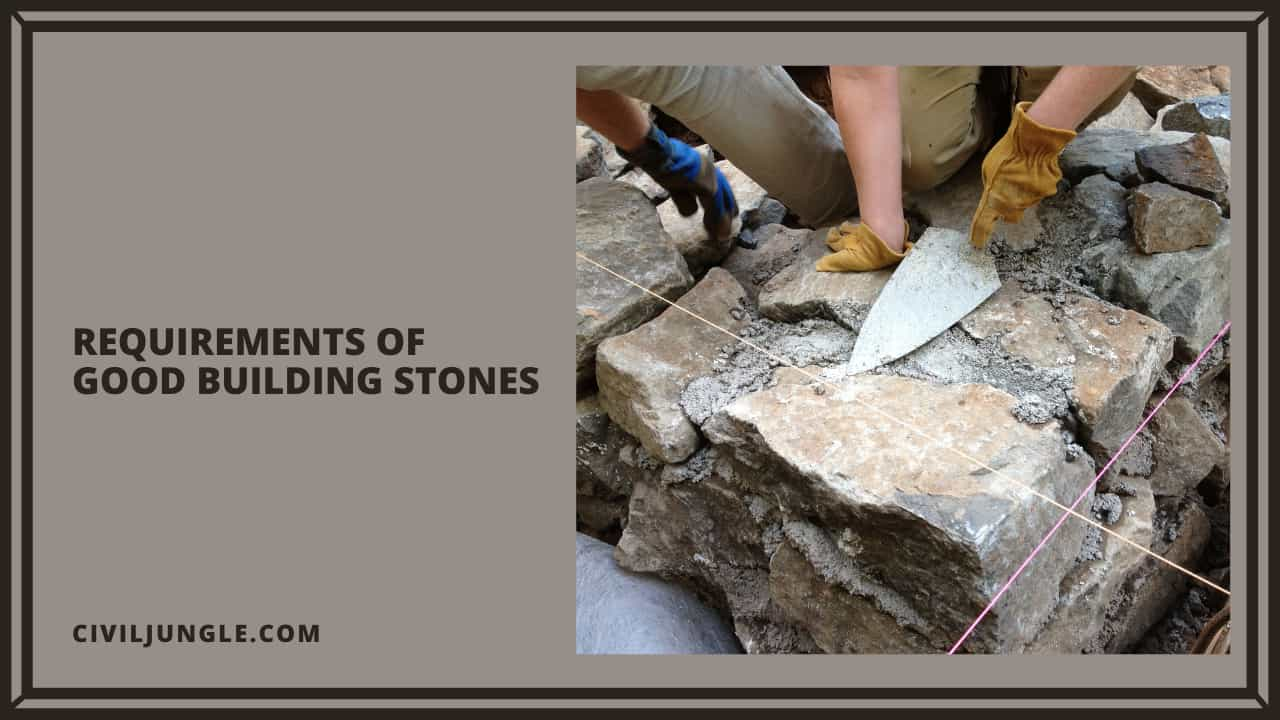

when this topic has be published?